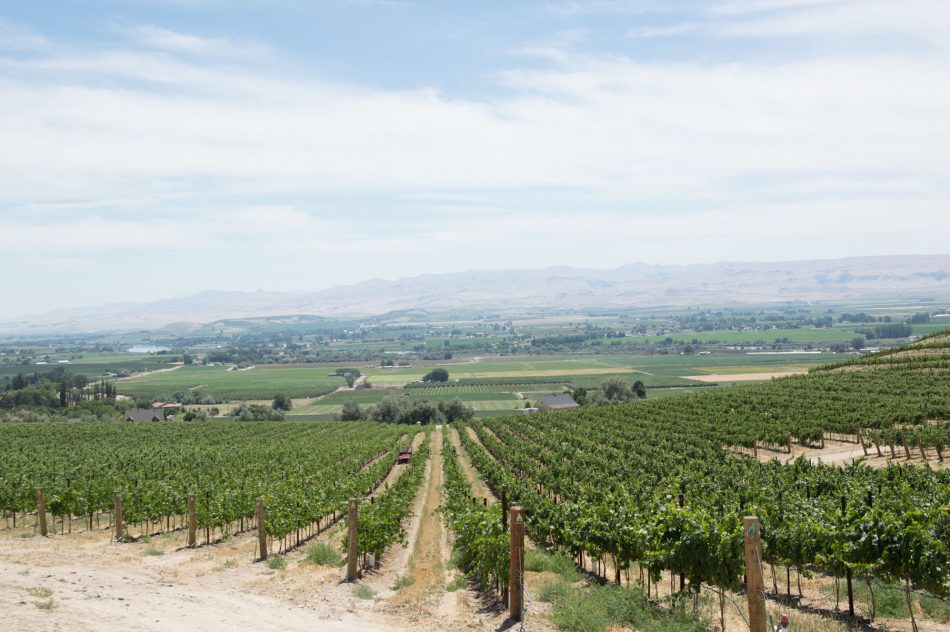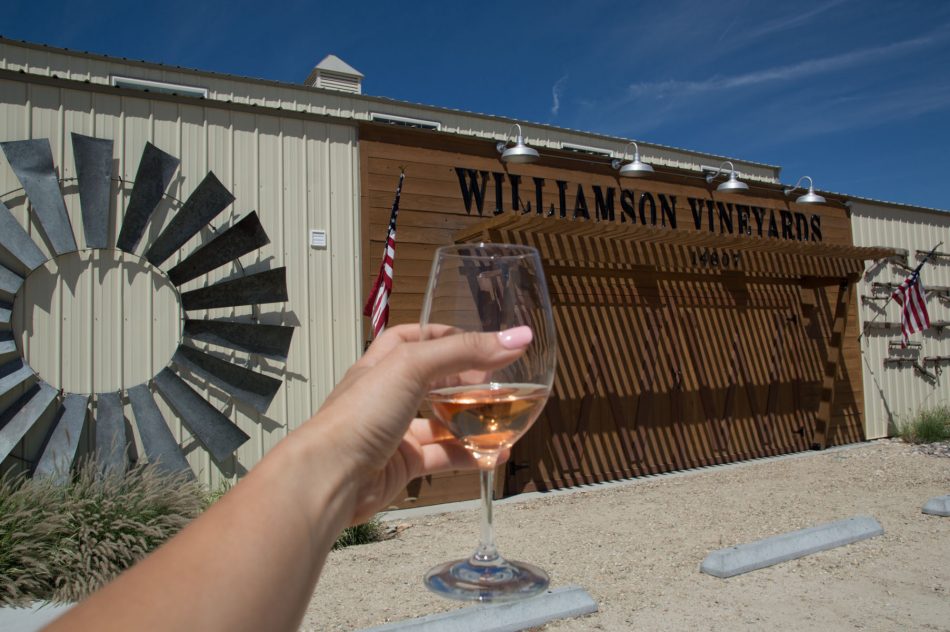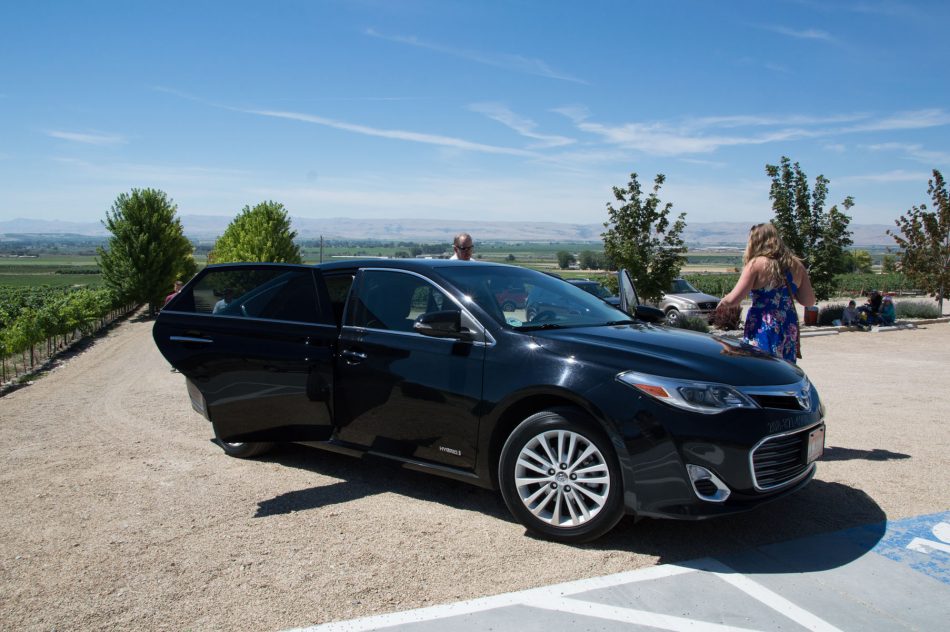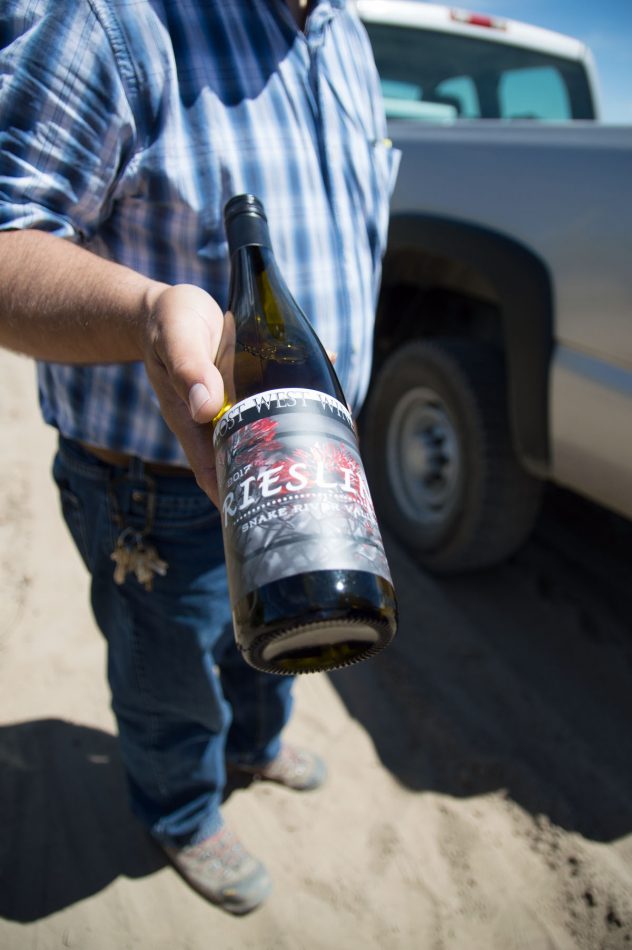
Gorgeous Idaho Vineyards.
When you think of a romantic vacation to wine country, you probably envision a scene of endless vineyards in California, Italy, or France. Those, of course, are the most romantic, and the three most popular wine destinations for Americans. The idea of traveling to Idaho to explore its multiple American Viticultural Areas (AVA) may seem bizarre, but trust me. Exploring the Idaho wine regions will surprise you in the most delightful ways.
Idaho Wine Country: Not a New Kid on the Block

The Williamson family homesteaded this land starting in 1909.
Did you know that every single state in the union produces wine? Some of them are newcomers, but Idaho certainly isn’t one of them. Articles regarding grape growth and vineyard health can be found in the Idaho Statesman newspaper going back to 1865! The climate is akin to California’s Sonoma Valley. While Idaho is further north than California, the longer days lead to more sunlight and thus, the same amount of warmth for the grapes. With great growing weather and over 150 years of grape growth, Idaho wine country is well established and great for the most elevated wine lovers.
There are Four Wine Regions to Visit
If 150 years of grape growing doesn’t convince you that Idaho wine country isn’t just jumping on the bandwagon, perhaps four different wine regions will. Idaho is an immense and diverse state. Up north, in the panhandle, it is mountainous and green, with long summer days and long, wet winters. In the south, it is a sub-Saharan climate with much drier weather. Near Coeur D’Alene and Spokane, there is the Northern Wine Region. These vineyards often experiment with fruit wines as well, since the huckleberry is prevalent in the region.
Then, just a touch south, is the Lewis-Clark Valley. With its AVA designation in 2016, this regions rich wine growth was paused in 1916 with the passage of prohibition. The region’s grapes were revived after that dry spell, and now, Lewis-Clark Valley is home to 25 different white and red grape varietals.
Just about an hour outside of Idaho’s capital, the Snake River Valley and its sub-AVA of Eagle Foothills, is the easiest wine region to get to from Boise. Sitting on the spot of the ancient Lake Idaho, the soil is volcanic, mineral rich, and has a great water source in the nearby Snake River. Here, the growth is diverse and includes Tempranillo, Viognier, Riesling, Cabernet Sauvignon, and Syrah among others.
Finally, halfway between Boise and Twin Falls, the South Central Wine region is home to seven wineries and is still growing.
Idaho Wine Country is Lighter on Your Pocket
Because Idaho wine country is not as renowned as its California and Oregon brethren, the cost of Idaho wines, and a trip to the region, is much easier on the pocketbook. Learn ten fun facts about Idaho if it suits your fancy. During my visit to the Sunnyslope Region, my friend Katie and I had a private driver through Idaho Towncar. Our driver, Bill, was professional and prompt, and shared his tidbits about the region. With a car full of water bottles for us, he was just a quick text away. At between $45- $65 per person, this private option is more comfortable and more affordable than other domestic wine region tours. Additionally, the wine itself is affordable. As Carrie Sullivan of Telaya Wine Company told me, “a $50 bottle of wine in California is $40 in Oregon and $30 in Idaho.”
And Finally, Idaho Wines are Damn Good
Fujishin Family Cellars Reisling is a Beauty!
I am not a sommelier. With age and more exposure to wine events and tastings, my palate is more mature. A few years ago, I learned that price is by no means an indicator of the quality of wine during a trip to Destination Kohler. Before heading to The Immigrant Room, the bartender asked what kind of wine I like, and gave me two offerings. The first, a glass from a $50 bottle of wine, and the second, a glass from a $20 bottle of wine. She stated that, in her opinion, the depth and flavor of the cheaper bottle surpassed that of the more expensive one. I certainly agreed, and ever since, I have been more aware of taste over prestige.
Even if you have not heard of a single winery from Idaho, do not overlook them. The climate, altitudes, and mineral rich soil results in a terroir driven product. The variation of grapes are astounding, with the products resulting in incredible red and white wines.
Many thanks to the Idaho Wine Commission for arranging the details of my visits.










I’ve been to Idaho before but not a wine focused trip. I need to do that! I have a trip to Willamette Valley in April – looking forward to trying some elegant wines there.